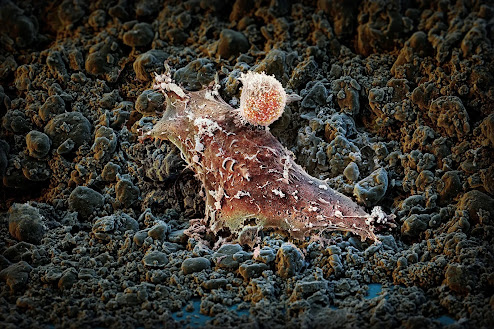That stubborn athlete’s foot infection an estimated 70% of people get at some point in their life could become much easier to get rid of thanks to nanoscale drills activated by visible light.
Proven effective against antibiotic-resistant infectious bacteria and cancer cells, the molecular machines developed by Rice University chemist James Tour and collaborators are just as good at combating infectious fungi, according to a new study published in Advanced Science.
Based on the work of Nobel laureate Bernard Feringa, the Tour group’s molecular machines are nanoscale compounds whose paddlelike chain of atoms moves in a single direction when exposed to visible light. This causes a drilling motion that allows the machines to bore into the surface of cells, killing them.

.jpg)



.jpg)









.jpg)

